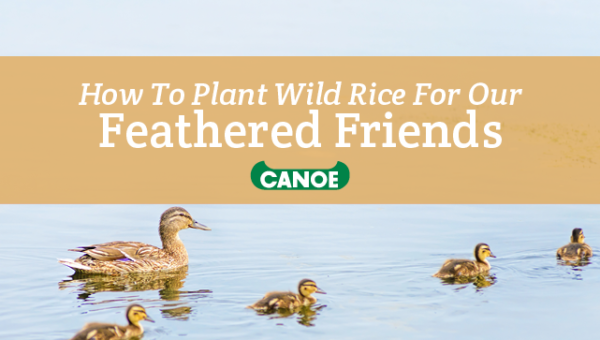
It’s no secret that everyone here at Canoe loves to eat wild rice. Bud did you know that our fine featured friends love it just as much? It’s possible to help our wildlife by planting wild rice yourself. Here’s how.
How do You Grow Wild Rice?
Luckily, this stuff grows in the wild—but don’t let that fool you. It takes more than merely placing seeds outdoors. You’ll need to live close to a wetland area for this crop to work best, and is best suited for planting at a depth of 18-22 Inches.
Make sure to pick an area at the lake or pond that is rich in nutrients. Avoiding areas that have the consistency and color of clay will be your best bet in finding a suitable planting area.
Once you have the location plotted out, we’d recommend sowing the seeds at a rate of 30-35 pounds per acre of land. This keeps the plants from competing over nutrients and disrupting the ecosystem of the growing area.
What Kind of Rice Should You Use?
This depends entirely on preference and geographic location. If you’re in the midwest, we’d recommend Zizania palustris L.This strain is native to the region and has been consumed as a grain since prehistoric times. You could say it’s acclimated well to the area!
How Long Does it Take to Grow?
In a regular growing season, Wild Rice will not be ready for harvest in until late August or early September. A plant taken care of in a biointensive way can yield as much as a ½ Lb. of rice per plant – nothing short of impressive for harvest.
What Does This Have to Do with Wildlife?
Many species of ducks and waterfowl indigenous to our region experience health issues from an improper diet, with its biggest contributor being food shared from humans. Weather it’s bread, chips, donuts, cereal, popcorn, etc; the digestive system of these animals isn’t designed for the overconsumption of processed foods.
While it can be tempting to make a feathered friend with breadcrumbs, a healthy diet consisting of grains and nutrients found in their natural habitat is the best way to feed ducks.
We hope you’ve found this article helpful for your summer plans, and at the very least find yourself informed on an often overlooked subject. While summer adventures are upon us, don’t forget about the wild life that makes the wilderness so great!
